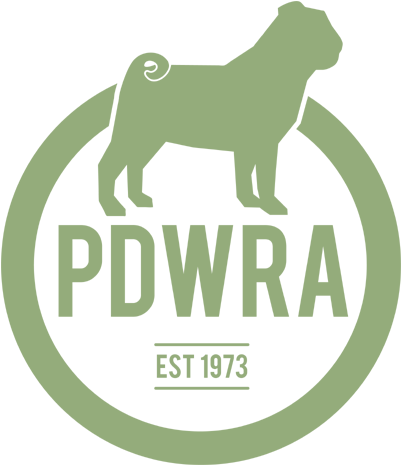by Yasmin | 31 Dec, 2022 | Blog, News, Pug Health
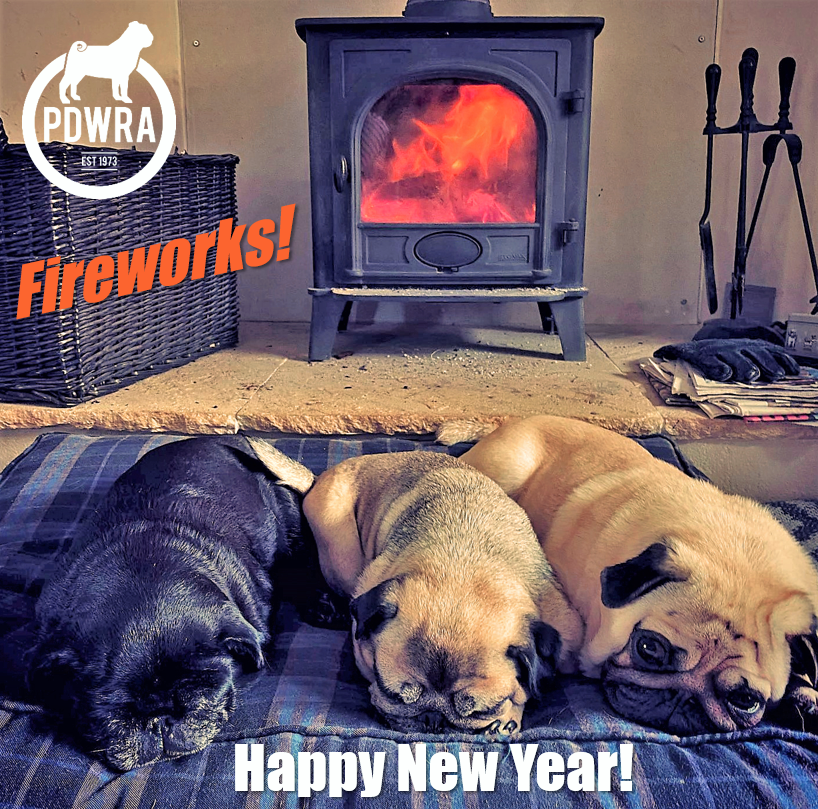
As it’s New Year’s Eve and as many as a third of all dogs will struggle with the noise and unexpected loud bangs from fireworks, please prepare and protect them as you would for bonfire night and other similar, human celebratory periods!
Here are some tips to remind you, and help your dogs have a Happy New Year too!
- Walk them before it’s dark and parties/activities may begin.
- Feed your dogs before fireworks begin, as they may be too stressed to eat.
- Make sure your house or garden is escape-proof, as they can bolt or go missing. (Check their microchip registration is up-to-date!)
- Keep windows and curtains closed, the lights on and turn the TV on to play music to help drown out the noise.
- Create a safe, cosy place for your dog to settle before it gets dark. Dogs enjoy cosy dens.
- Keep them entertained to take their mind off the noise.
- Comfort and reassure them.
- Desensitise pets to noise: Playing fireworks noises quietly using sound CDs, while rewarding calm behaviour, can help them become accustomed to the noise. Play them in the run up to firework season, to help them see they need not be afraid.
- Consider anxiety relief products: Anxiety relieving products containing pheromones are an effective way to help your pet stay calm also comforting jackets are like a big hug!
- Watch out for spent fireworks in the following days/weeks.
Further Advice & tips on your pug’s welfare can be found at:
by Yasmin | 24 Dec, 2022 | Blog, News, Rescue Stories
Wishing all our supporters a Happy Christmas from a selection of our happily rehomed PDWRA pugs!
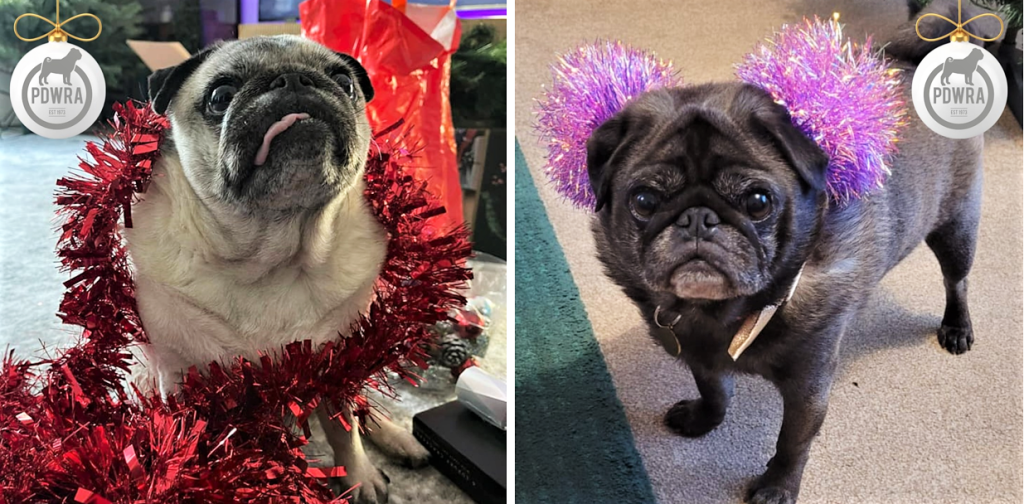
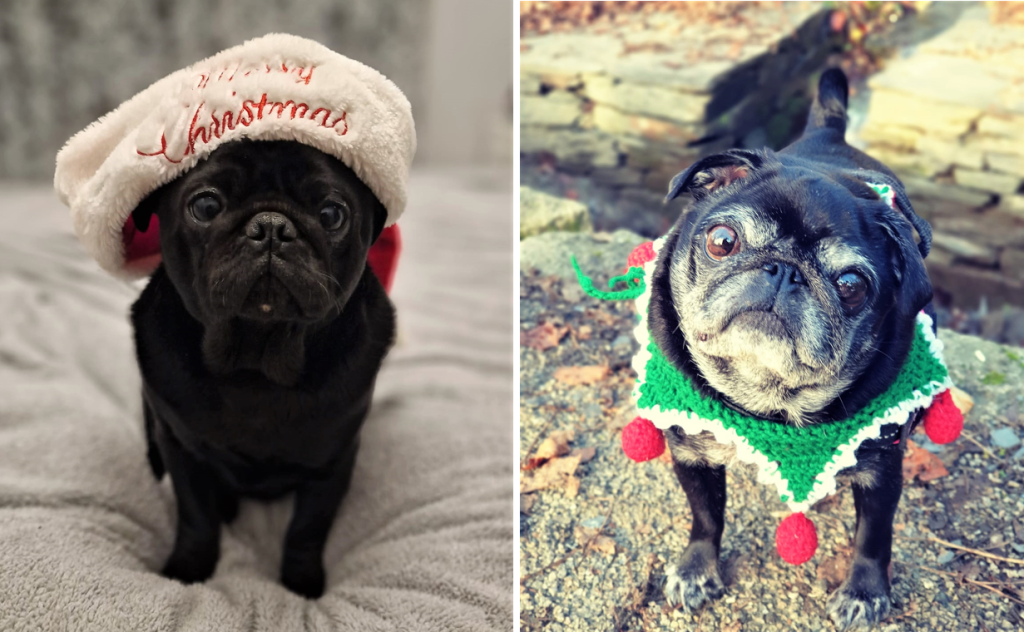
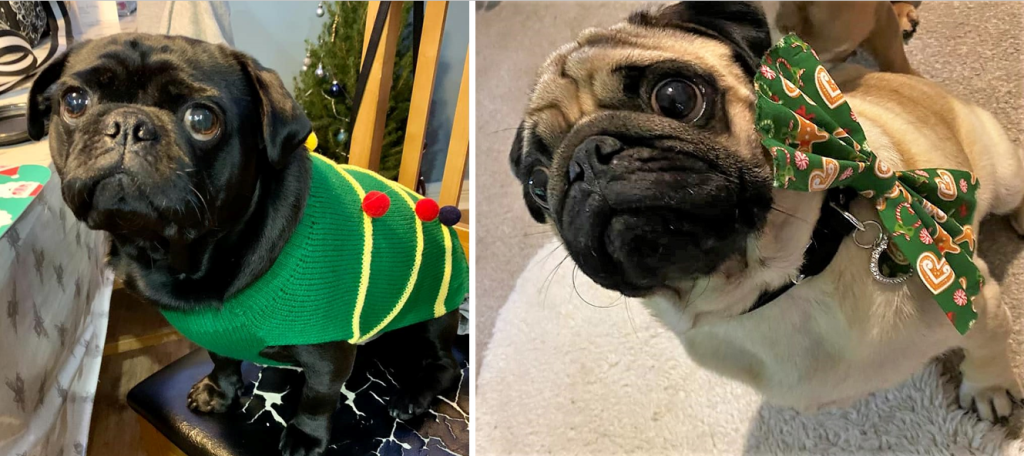
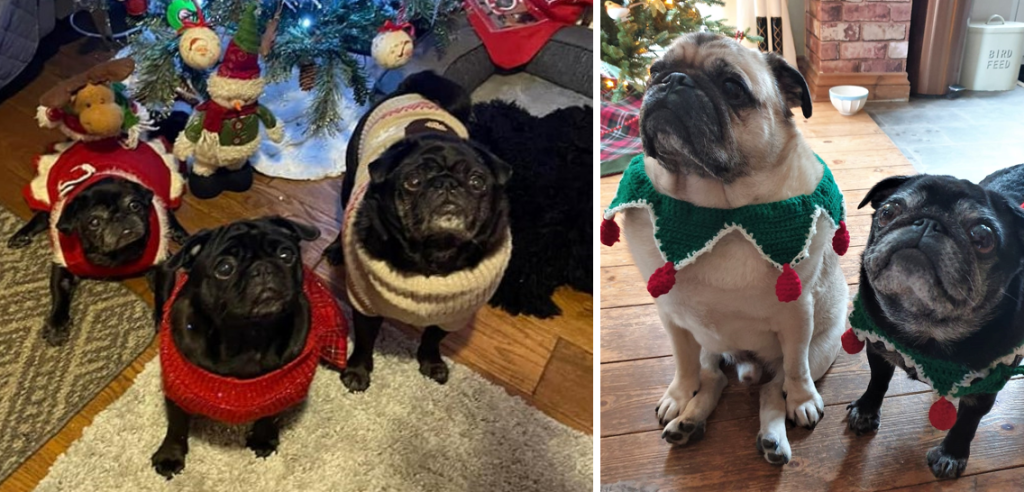
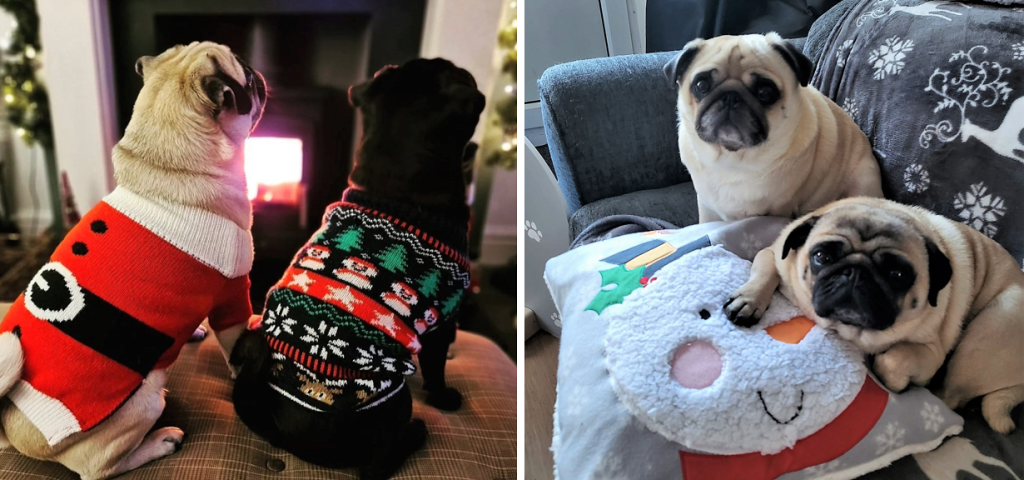
by Yasmin | 20 Dec, 2022 | Blog, News, Fundraising
Please don’t forget, PDWRA 2023 calendars are on sale NOW!
All funds raised are needed for Pug care costs.
by Yasmin | 13 Dec, 2022 | Blog, News, Rescue Stories
New Year Update on Lucy! | The Pug Dog Welfare & Rescue Association (pugwelfare-rescue.org.uk)
This was Lucy. As you can see, she has sadly been neglected and starved!
Fortunately, we were called upon to rescue Lucy.
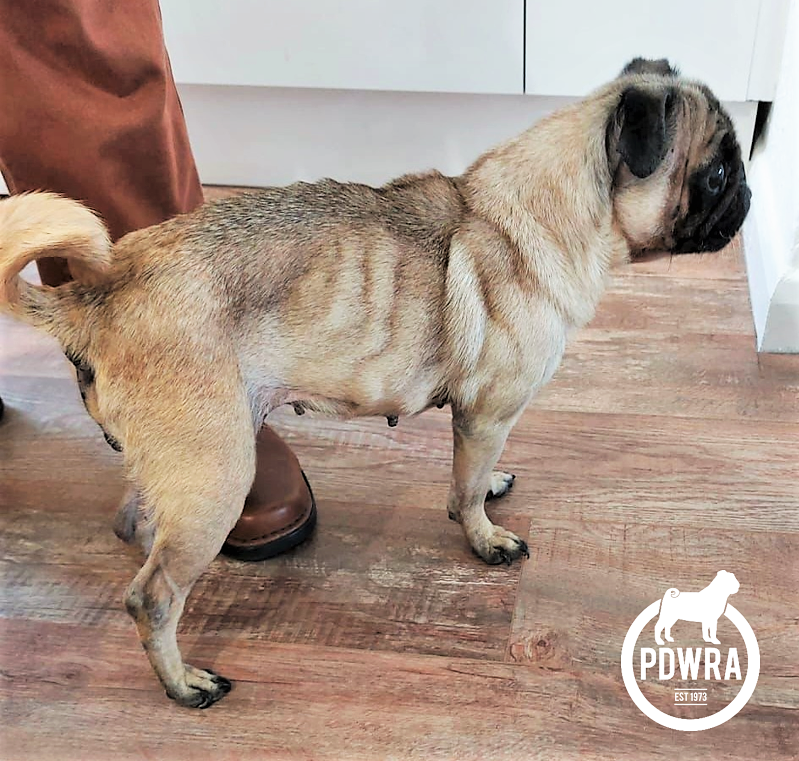
It’s quite shocking and upsetting to see a pug in this state of neglect and suffering. Lucy is unsurprisingly a complex pug at present and needs time and space to decompress.
It has given Lucy possession and aggression issues, hence she requires minimum stress around her in the form of other pets or children.
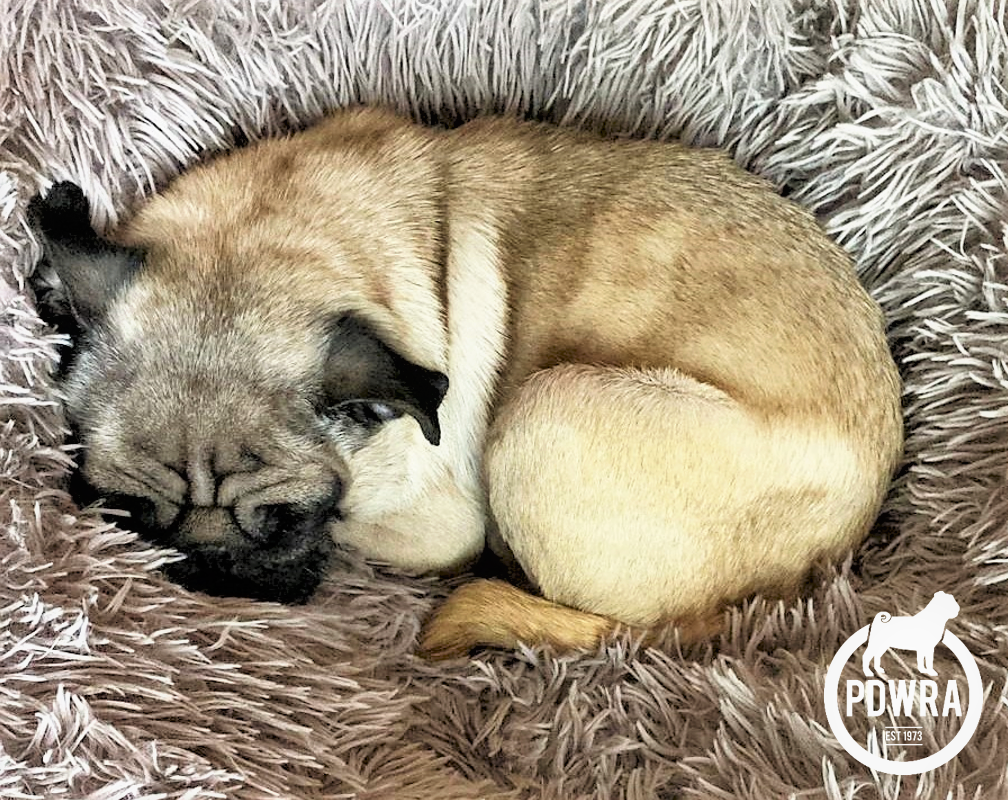
Lucy has been placed in a very experienced foster home able to provide behavioural support to her and she’s already looking so much more comfortable in her new haven.
She has also put on half a kilo which is great progress, and she will be feeling the benefits already. Here she is looking particularly peaceful and content!
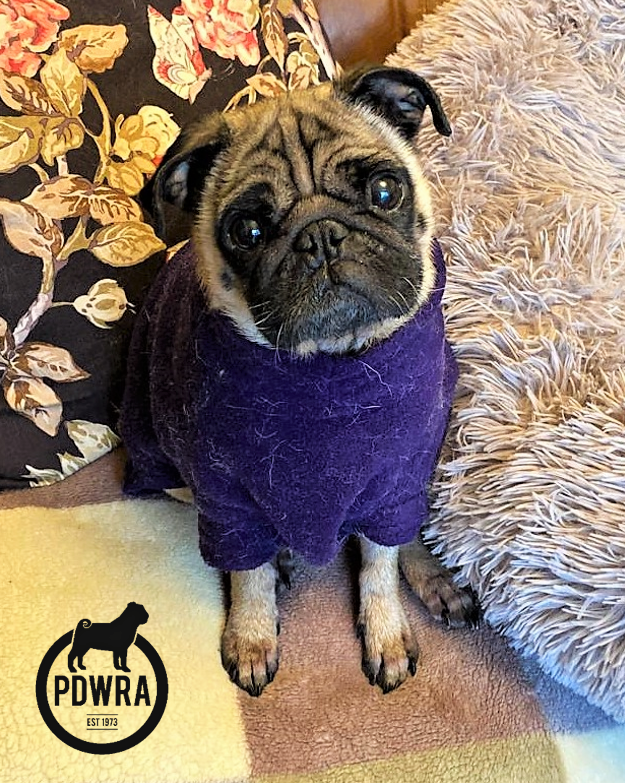
Pugs like Lucy, need experienced foster carers, willing to invest time and whatever support it takes to give them the best prospects for a normal life.
If you could offer this, please see:
Fostering | The Pug Dog Welfare & Rescue Association (pugwelfare-rescue.org.uk)
or
Adoption | The Pug Dog Welfare & Rescue Association (pugwelfare-rescue.org.uk)
Also, if you could donate, no matter how small, to help us with Lucy’s medical costs and others like her, please go to:
Donating to Pug Dog Welfare | The Pug Dog Welfare & Rescue Association (pugwelfare-rescue.org.uk)
Thank You!
by Yasmin | 13 Dec, 2022 | Blog, News
Mast Cell Tumours.
By Helen McKee, PDWRA Vet Advisor.
No doubt a significant number of you (myself included!) will have had the misfortune to have had experience of a mast cell tumour (MCT) with one of your pugs.
Unfortunately, pugs are very prone to MCT’s, and since the tumour can take the guise of so many different lumps and bumps, it needs to be addressed promptly.
If you find a lump, either on the skin or under (sub-dermal), it is worth taking your pug to the vet and having it assessed. I would strongly advise that your vet does what is called a Fine Needle Aspirate (FNA), to either eliminate or confirm whether it is indeed a MCT.
Since their appearance can vary hugely, I would definitely recommend that a FNA is done straight away. Some vets are unaware as to how common these tumours are in pugs and may dismiss it as something else, but I would strongly advise that the vet take a sample. An FNA can be done with your pug awake at the time of the consultation; a needle is used to suck up tissue into it, which is then looked at under a microscope. If the lump is a MCT, granular cells can be seen clearly and are very distinctive of a mast cell tumour.
If the FNA reveals that the mass is a MCT, then it will need to be removed with a good margin (depending on its position on the body). Your vet will also recommend histopathology; this will give a guide as to how aggressive the tumour is, which ranges from one (low grade) to three (high grade).
The tumour grade will also indicate the likelihood of both local and peripheral (metastasise around the body) spread.
Confusingly sub-dermal tumours have a different grading system (Kuipel) and can be more difficult to predict their grade; further tests can be done to get a better idea but are only worth carrying out if you intend to follow through with more intensive treatment such as chemotherapy (if indicated).
Normally, if a tumour is grade one or two, then no other treatment is needed other than removal (excision) with a good margin. However, new MCT’s can arise elsewhere on the pug’s body once they have had one.
If the tumour is classed as Grade 3, it means it is cancer that can potentially spread around the body. Chemotherapy can be used for dogs with Grade 3 MCT’s but has mixed results and can in themselves make your pug ill, so needs careful consideration. It also involves expensive tests to ascertain spread, such as CT scans, which may also need to be taken into account.

The other treatment you may be offered (and is still in its early stages of use) is a drug called Stelfonta. Its use is specifically for mast cell tumours that cannot be removed with a good margin because of their position (eg. lower limb). Before its use (it is injected directly into the tumour), scans of the body and samples of certain organs are undertaken to ensure the tumour hasn’t spread round the body. The drug can cause extreme pain and the treatment can occasionally be fatal, so if you are offered this, ensure you ask as many questions as possible so that you can make an informed decision. I personally would not put my dog through it.
So, in summary, by far the best way of dealing with MCTs is to catch them early and remove them with as good a margin as is possible.
Helen (MRCVS)
For further items on pug health, please go to: Pug Health & Wellbeing | The Pug Dog Welfare & Rescue Association (pugwelfare-rescue.org.uk)












